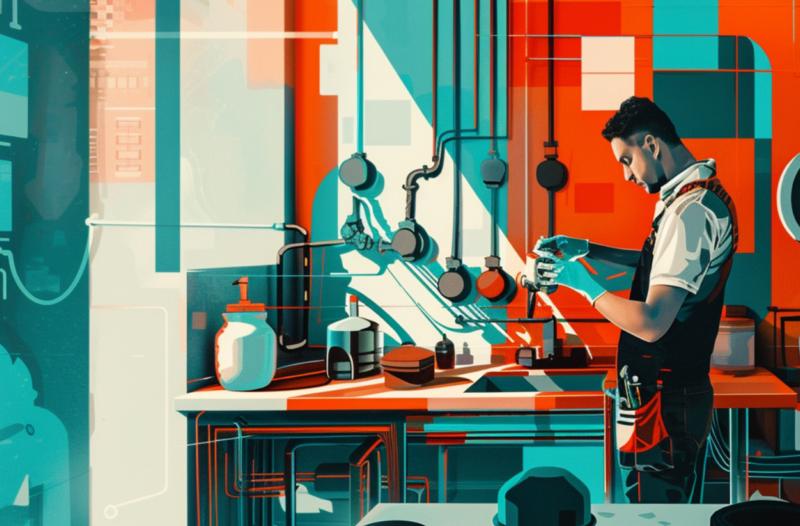Low-Flow Fixtures: Saving Water Without Sacrifice
Imagine a showerhead that feels like a gentle waterfall but uses less water than a goldfish bowl. Low-flow fixtures, including showerheads, faucets, and toilets, are designed to reduce water usage without compromising performance. These marvels of modern plumbing use aerators to mix air with water, creating a satisfying flow that feels much fuller than it is. And while you may not be able to perfect your opera voice in the shower as long as you used to, you’ll be serenading the planet with your water conservation efforts.Switching to low-flow fixtures can save thousands of gallons of water annually. It’s a small change with a big impact, like swapping your morning coffee for a green smoothie—only with fewer complaints about missing caffeine.
Greywater Systems: Recycling Water, One Flush at a Time
Greywater systems are the ultimate in recycling, turning your used water into a resource for your garden or toilet. This isn’t some sci-fi technology involving lasers and holograms; it’s a practical and effective way to reduce water waste. Greywater is gently used water from sinks, showers, and washing machines. It’s not quite pristine enough for drinking (so put down that glass), but it’s perfect for flushing toilets or watering plants.By installing a greywater system, you can cut your water usage dramatically. It’s like giving your water a second chance at life, much like that plant you keep trying to resurrect on your windowsill. This system not only conserves water but also reduces the strain on sewage treatment facilities. It’s a win-win, except for the water molecules that were hoping for a quick trip to the ocean.
Tankless Water Heaters: Hot Water on Demand
Gone are the days of bulky water heaters that resemble metallic elephants squatting in your basement. Tankless water heaters are compact, efficient, and only heat water when you need it. These heaters work by passing cold water through a heat exchanger, where it’s instantly warmed up, kind of like how your cat’s mood improves when you open a can of tuna.Because tankless water heaters don’t store hot water, they don’t waste energy keeping it at a constant temperature. This not only saves energy but also means you won’t run out of hot water during your marathon shower concerts. Plus, they last longer than traditional water heaters, making them an investment in both your home and your peace of mind.
Water-Saving Landscaping: A Smart Yard
While plumbing usually brings to mind images of indoor fixtures and pipes, it extends to your outdoor space as well. Water-saving landscaping, or xeriscaping, is a brilliant way to reduce water use without sacrificing curb appeal. By choosing drought-resistant plants, mulching generously, and installing efficient irrigation systems, you can create a yard that’s as easy on the eyes as it is on your water bill.Consider installing drip irrigation systems, which deliver water directly to the roots of plants, minimizing evaporation and runoff. It’s like precision targeting for your garden—no more watering the sidewalk! Combine this with a rain barrel system to collect and reuse rainwater, and you’ll be well on your way to a self-sustaining garden that your neighbors will envy.
Composting Toilets: Turning Waste into Resource
For the truly adventurous (and perhaps a bit brave), composting toilets offer an eco-friendly alternative to traditional flushing toilets. These systems don’t use water at all; instead, they compost human waste into usable soil. Before you wrinkle your nose, consider that composting toilets can significantly reduce water use and sewage output. They’re perfect for off-grid living, tiny homes, or just a household looking to minimize its environmental footprint.Composting toilets come in various designs, from simple DIY setups to high-tech models with built-in ventilation and composting chambers. And while you might not brag about this feature at your next dinner party, you can rest easy knowing you’re doing your part to reduce water consumption and create nutrient-rich compost. It’s a conversation starter, at the very least.
A Greener Future, One Pipe at a Time
Embracing eco-friendly plumbing solutions is like joining a secret society of sustainability nerds—except instead of secret handshakes, we exchange tips on low-flow faucets and greywater systems. By making small changes, like installing low-flow fixtures or a tankless water heater, or bigger leaps, like setting up a greywater system or composting toilet, you can make a significant impact on your household’s environmental footprint.So, whether you’re a seasoned eco-warrior or just dipping your toes into the world of green living, these plumbing innovations offer practical and effective ways to save water, energy, and maybe even a few dollars on your utility bills. Plus, you’ll have plenty of fun facts to share at parties. Remember, every drop counts, and sometimes, the best way to make a splash is with a trickle!
Article kindly provided by mcsheating.com


